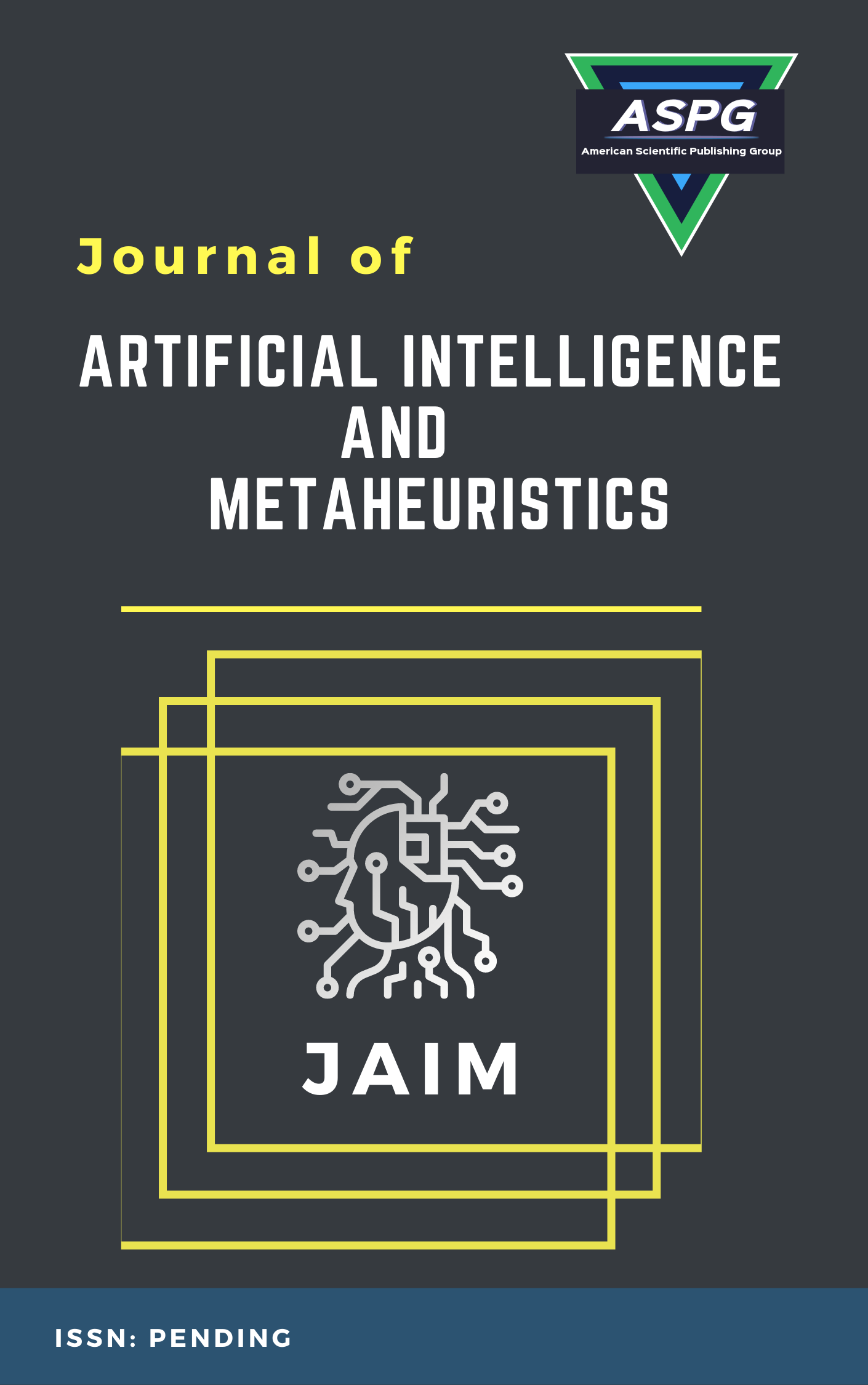

Volume 6 , Issue 2 , PP: 26-35, 2023 | Cite this article as | XML | Html | PDF | Full Length Article
Mohamed Ahmed Kandel 1 * , Faris H. Rizk 2 , Lima Hongou 3 , Ahmed Mohamed Zaki 4 , Hakan Khan 5 , El-Sayed M. El-Kenawy 6
Doi: https://doi.org/10.54216/JAIM.060203
Smart city development necessitates the implementation of effective traffic management strategies. In this vein, various deep learning architectures, including VGG16Net, VGG19Net, GoogLeNet, ResNet-50, and AlexNet, are employed to predict diverse traffic patterns extracted from a comprehensive dataset. Evaluating performance metrics such as accuracy, sensitivity, and specificity reveals discernible variations among models, with ResNet-50 and AlexNet demonstrating superior predictive capabilities. Descriptive statistics and statistical analyses, including ANOVA and the Wilcoxon Signed Rank Test, provide nuanced insights into model differences and significance. The findings bear significant implications for urban planners and policymakers transforming cities into intelligent ecosystems, offering valuable insights for informed decision-making in innovative city development. Improved traffic predictions enhance daily commuting experiences and contribute to the informed development of sustainable urban infrastructure, aligning seamlessly with the ongoing evolution of smart cities toward a more connected and efficient future. Notably, AlexNet exhibits a significant accuracy of 0.931780366 in the context of traffic pattern prediction.
Smart Cities , Traffic Pattern Prediction , Deep Learning Architectures , VGG16Net , VGG19Net , GoogLeNet , ResNet-50 , AlexNet , Urban Development , Traffic Management.Top of Form
[1] Bibri, S. E., & Krogstie, J. (2017). On the social shaping dimensions of smart sustainable cities: A study in science, technology, and society. Sustainable Cities and Society, 29, 219–246. https://doi.org/10.1016/j.scs.2016.11.004
[2] Kumar, N., & Raubal, M. (2021). Applications of deep learning in congestion detection, prediction and alleviation: A survey. Transportation Research Part C: Emerging Technologies, 133, 103432. https://doi.org/10.1016/j.trc.2021.103432
[3] Miglani, A., & Kumar, N. (2019). Deep learning models for traffic flow prediction in autonomous vehicles: A review, solutions, and challenges. Vehicular Communications, 20, 100184. https://doi.org/10.1016/j.vehcom.2019.100184
[4] Du, B., Peng, H., Wang, S., Bhuiyan, M. Z. A., Wang, L., Gong, Q., Liu, L., & Li, J. (2020). Deep Irregular Convolutional Residual LSTM for Urban Traffic Passenger Flows Prediction. IEEE Transactions on Intelligent Transportation Systems, 21(3), 972–985. https://doi.org/10.1109/TITS.2019.2900481
[5] Hou, Y., & Edara, P. (2018). Network Scale Travel Time Prediction using Deep Learning. Transportation Research Record, 2672(45), 115–123. https://doi.org/10.1177/0361198118776139
[6] Saleem, M., Abbas, S., Ghazal, T. M., Adnan Khan, M., Sahawneh, N., & Ahmad, M. (2022). Smart cities: Fusion-based intelligent traffic congestion control system for vehicular networks using machine learning techniques. Egyptian Informatics Journal, 23(3), 417–426. https://doi.org/10.1016/j.eij.2022.03.003
[7] Sharma, P., Singh, A., Singh, K. K., & Dhull, A. (2022). Vehicle identification using modified region-based convolution network for intelligent transportation system. Multimedia Tools and Applications, 81(24), 34893–34917. https://doi.org/10.1007/s11042-020-10366-x
[8] Muhammad, A. N., Aseere, A. M., Chiroma, H., Shah, H., Gital, A. Y., & Hashem, I. A. T. (2021). Deep learning application in smart cities: Recent development, taxonomy, challenges, and research prospects. Neural Computing and Applications, 33(7), 2973–3009. https://doi.org/10.1007/s00521-020-05151-8
[9] Singh, R. K., & Kumar, M. (2023). Future trends of path planning framework considering accident attributes for smart cities. The Journal of Supercomputing, 79(15), 16884–16913. https://doi.org/10.1007/s11227-023-05305-0
[10] Chen, D., & Lv, Z. (2022). Artificial intelligence enabled Digital Twins for training autonomous cars. Internet of Things and Cyber-Physical Systems, 2, 31–41. https://doi.org/10.1016/j.iotcps.2022.05.001
[11] Zheng, Q., Hou, Y., Yang, H., Tan, P., Shi, H., Xu, Z., Ye, Z., Chen, N., Qu, X., Han, X., Zou, Y., Cui, X., Yao, H., Chen, Y., Yao, W., Zhang, J., Chen, Y., Liang, J., Gu, X., … Wang, Z. L. (2022). Towards a sustainable monitoring: A self-powered smart transportation infrastructure skin. Nano Energy, 98, 107245. https://doi.org/10.1016/j.nanoen.2022.107245
[12] Wang, W., He, F., Li, Y., Tang, S., Li, X., Xia, J., & Lv, Z. (2023). Data information processing of traffic digital twins in smart cities using edge intelligent federation learning. Information Processing & Management, 60(2), 103171. https://doi.org/10.1016/j.ipm.2022.103171
[13] Fedorov, A., Nikolskaia, K., Ivanov, S., Shepelev, V., & Minbaleev, A. (2019). Traffic flow estimation with data from a video surveillance camera. Journal of Big Data, 6(1), 73. https://doi.org/10.1186/s40537-019-0234-z
[14] Smart City traffic patterns. (n.d.). [dataset]. Retrieved December 20, 2023, from https://www.kaggle.com/datasets/utathya/smart-city-traffic-patterns.
[15] Nanni, L., Loreggia, A., & Brahnam, S. (2023). Comparison of Different Methods for Building Ensembles of Convolutional Neural Networks. Electronics, 12(21), Article 21. https://doi.org/10.3390/electronics12214428
[16] Roul, R. K., Navpreet, & Sahoo, J. K. (2023). Ensemble-Based Road Surface Crack Detection: A Comprehensive Approach. Big Data and Artificial Intelligence, 166–184. https://doi.org/10.1007/978-3-031-49601-1_12
[17] Memon, S., Olaniyan, R., & Maheswaran, M. (2018). Towards a Model for Intelligent Context-Sensitive Computing for Smart Cities. In Handbook of Smart Cities (pp. 205–226). Springer, Cham. https://doi.org/10.1007/978-3-319-97271-8_8
[18] AlHaddad, U., Basuhail, A., Khemakhem, M., Eassa, F. E., & Jambi, K. (2023). Ensemble Model Based on Hybrid Deep Learning for Intrusion Detection in Smart Grid Networks. Sensors, 23(17), Article 17. https://doi.org/10.3390/s23177464
[19] Hadi, M. A., & Fard, F. H. (2023). Evaluating pre-trained models for user feedback analysis in software engineering: A study on classification of app-reviews. Empirical Software Engineering, 28(4), 88. https://doi.org/10.1007/s10664-023-10314-x